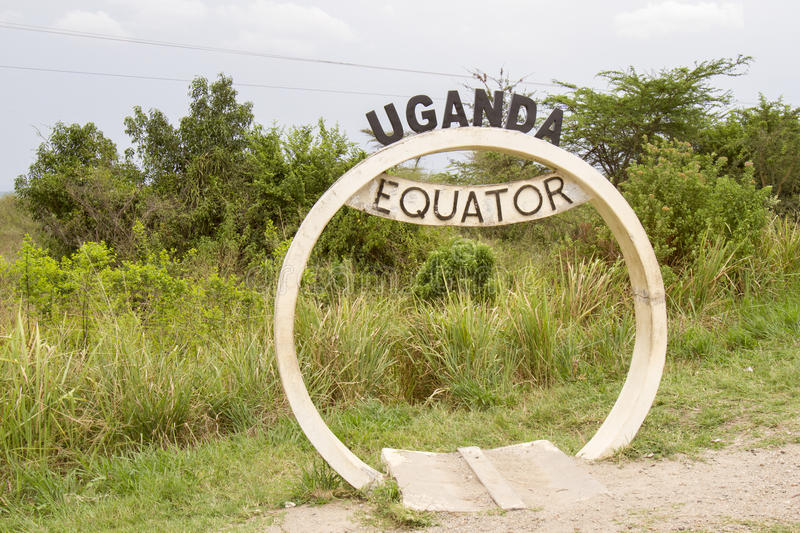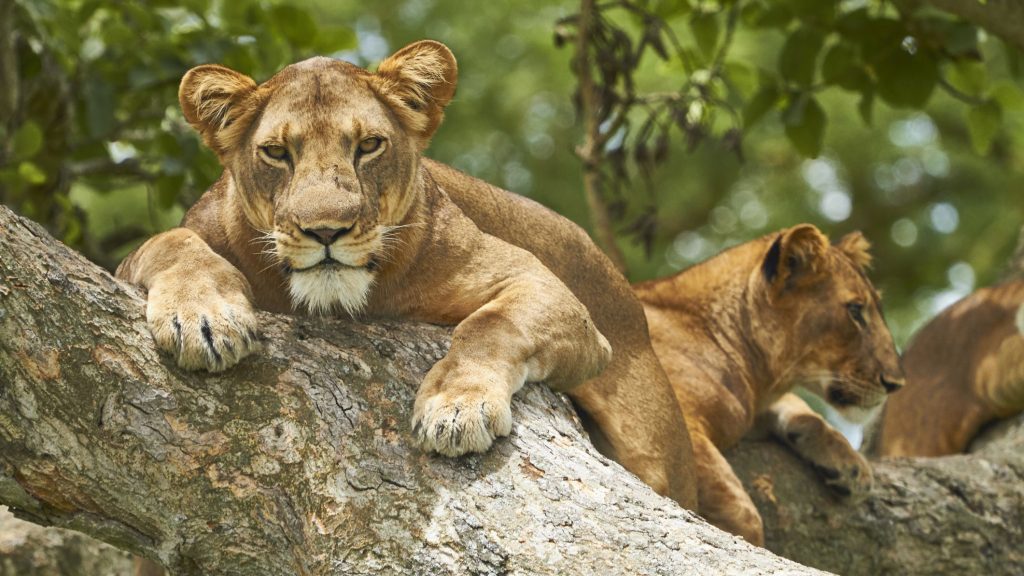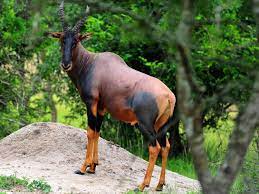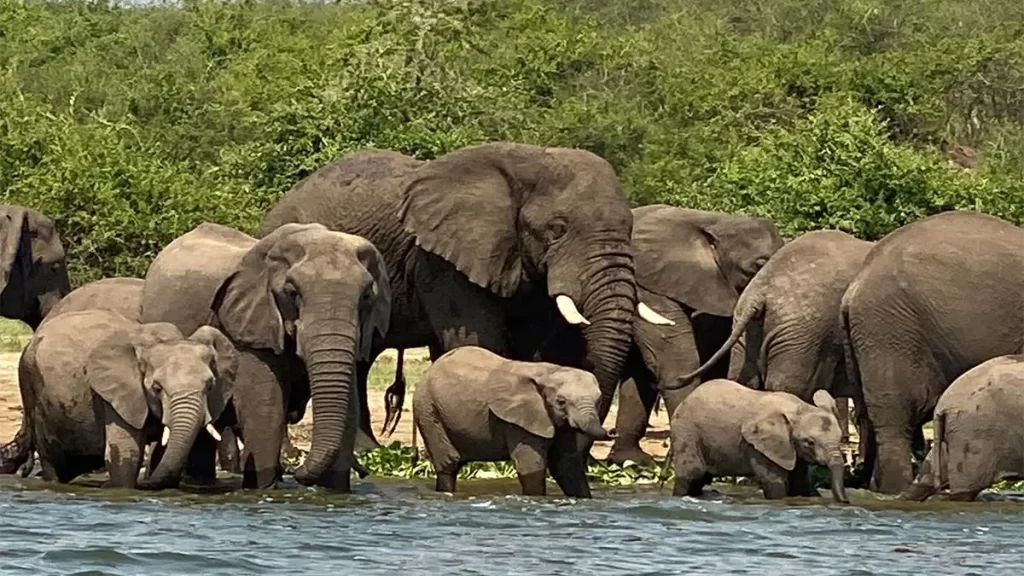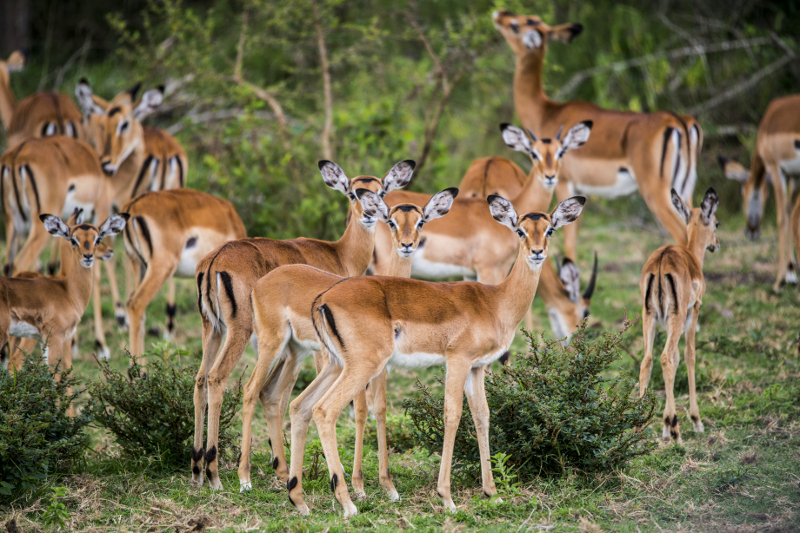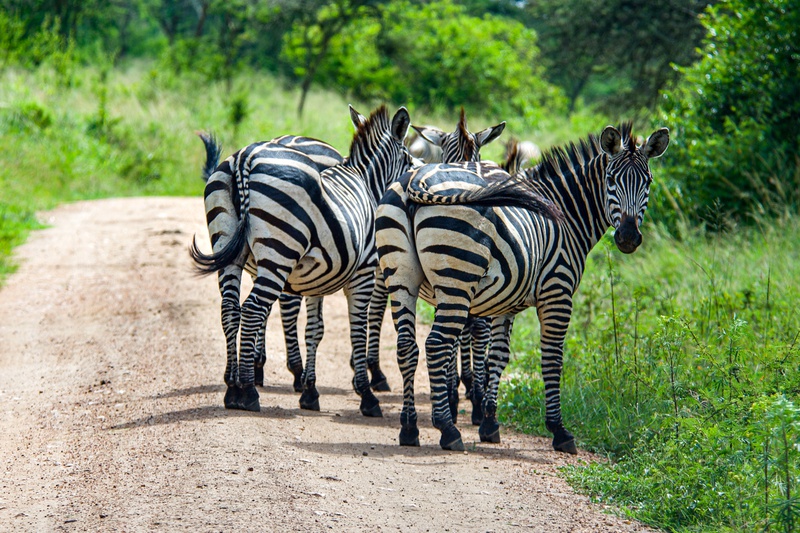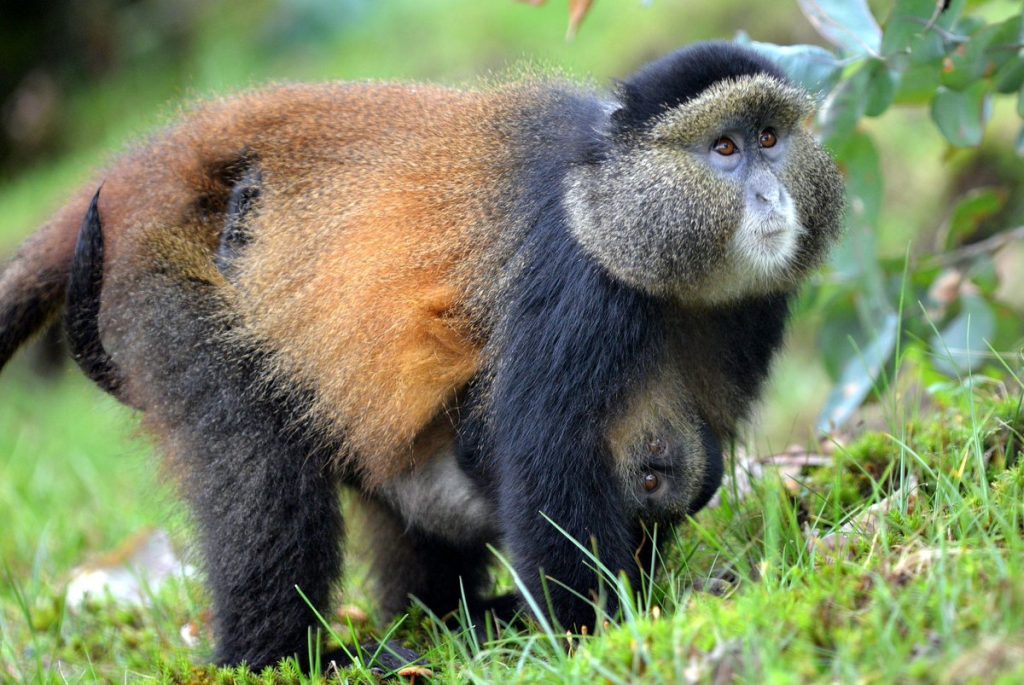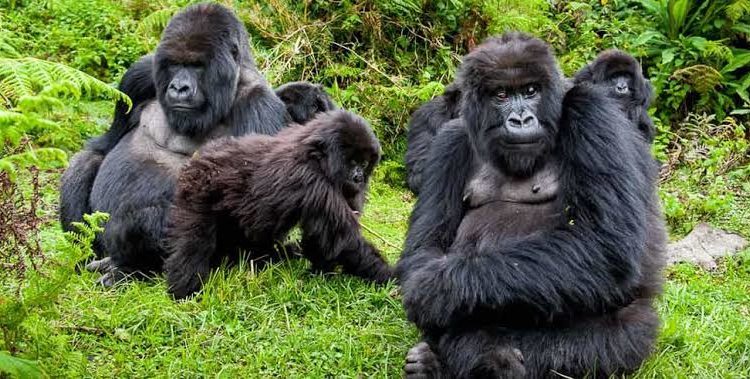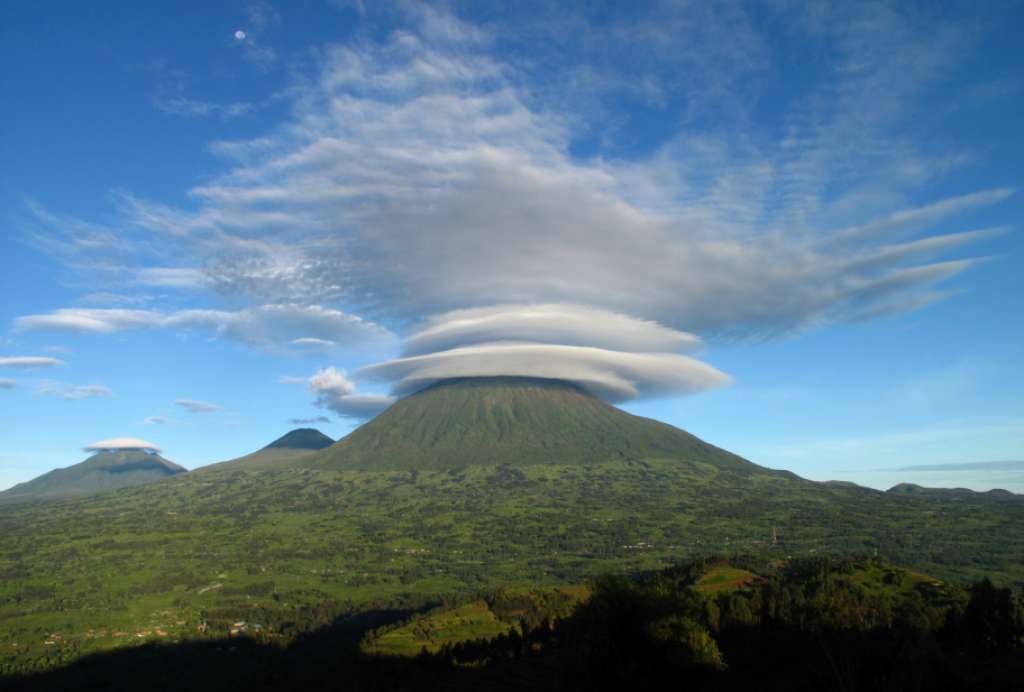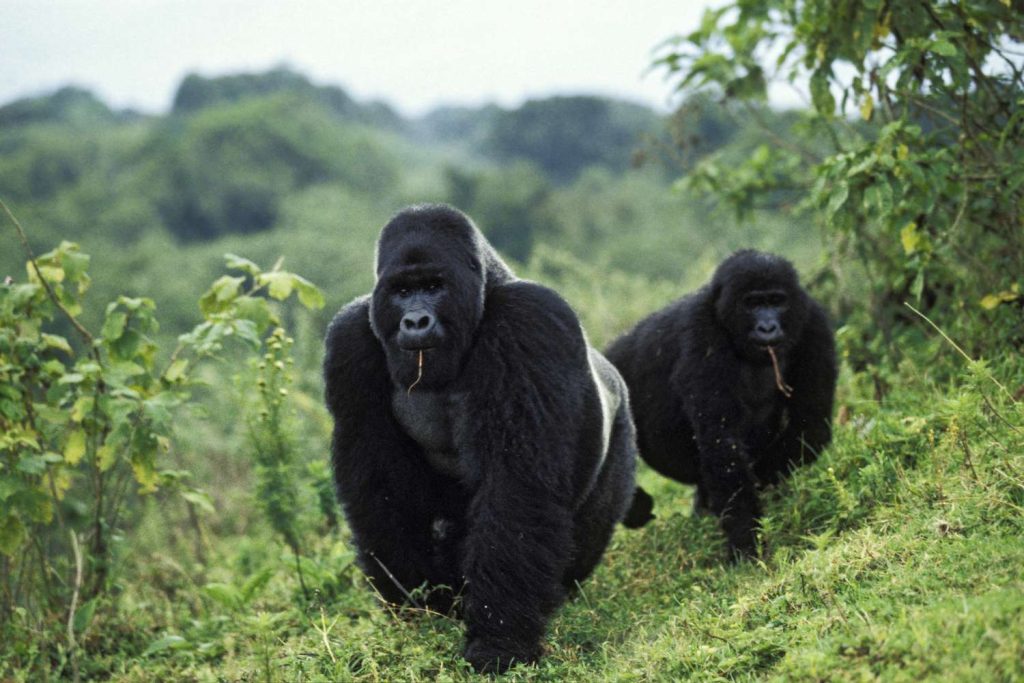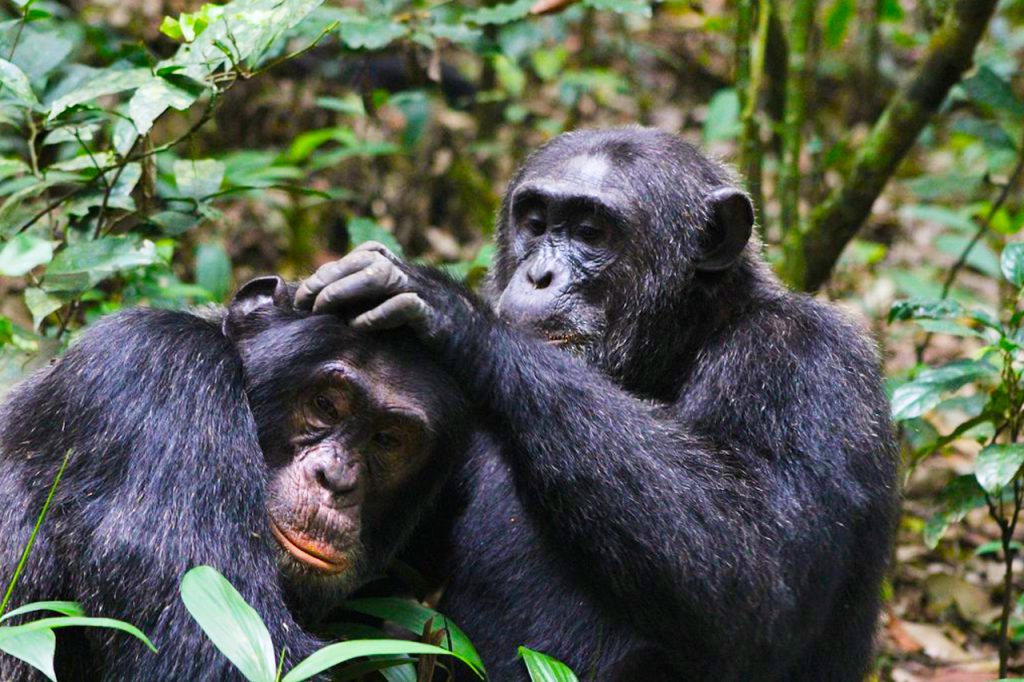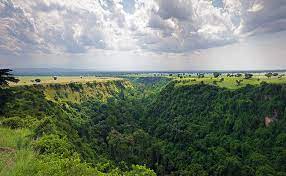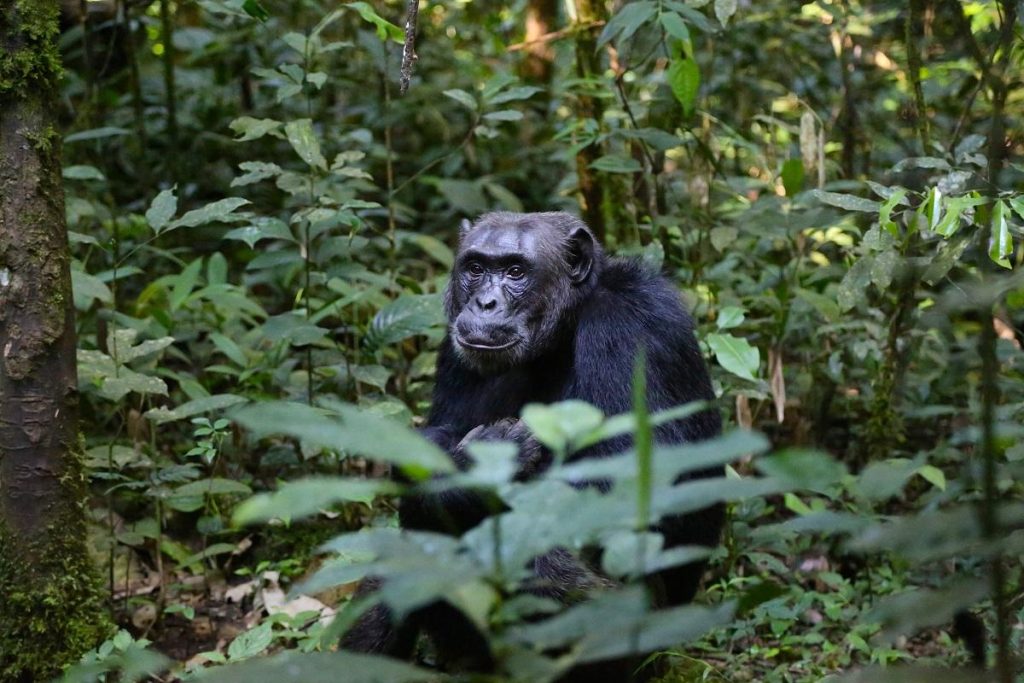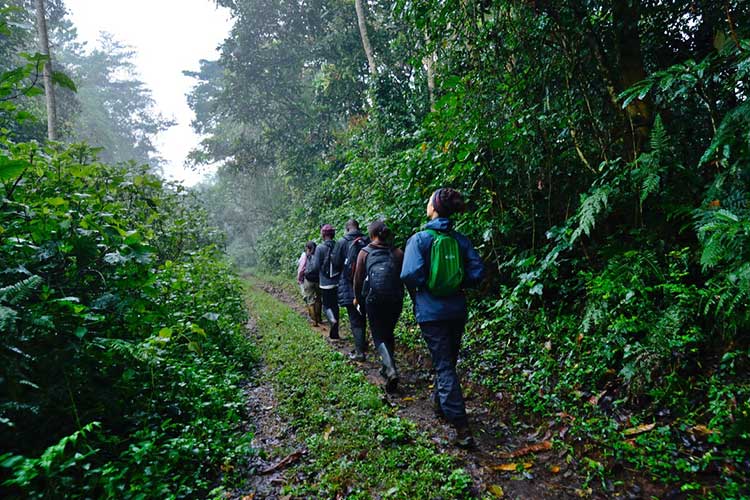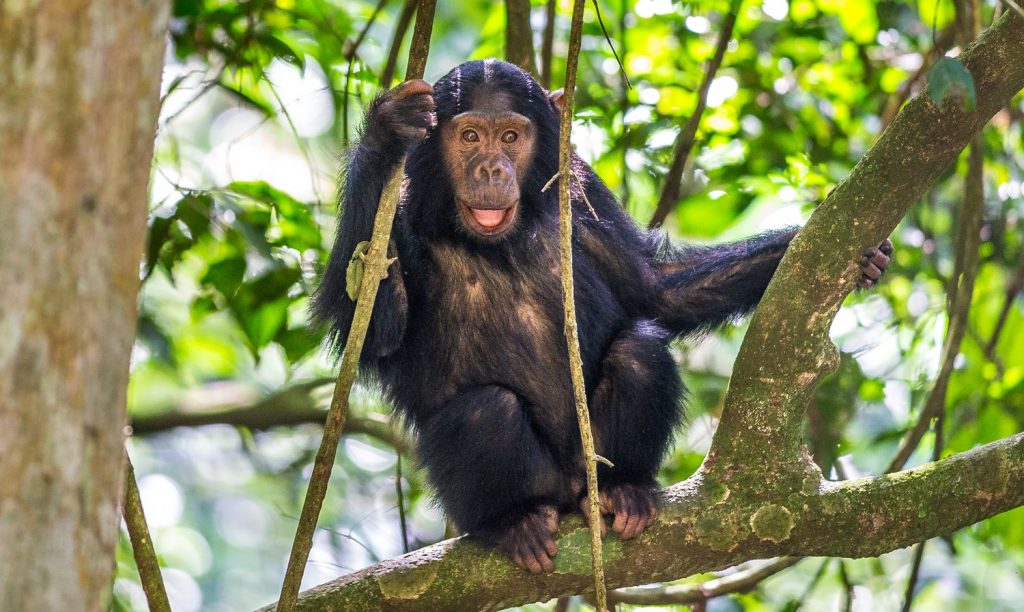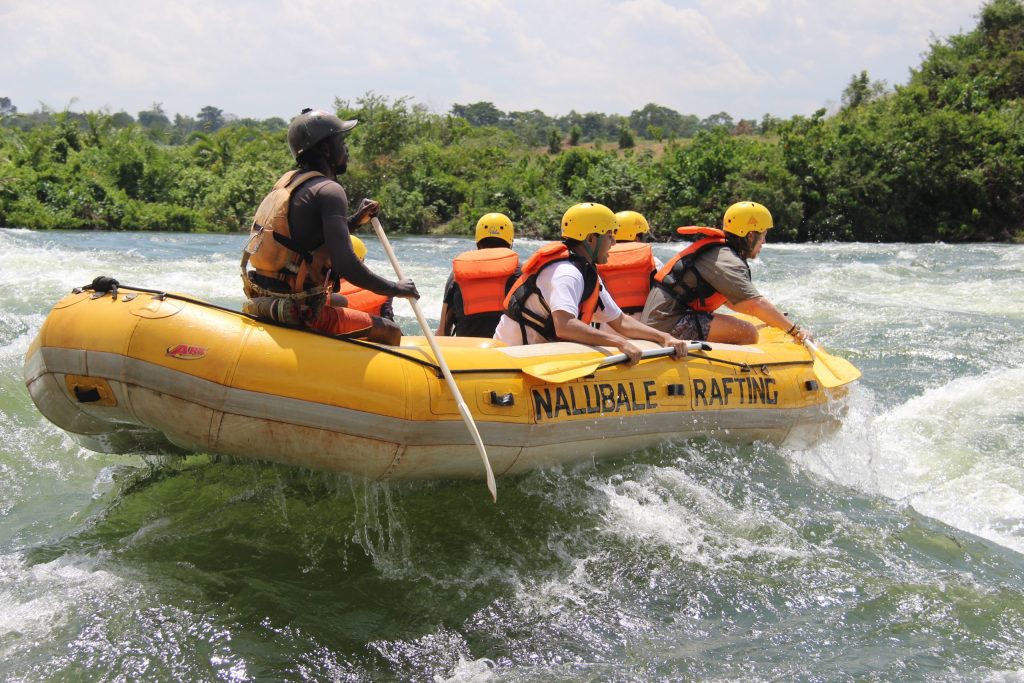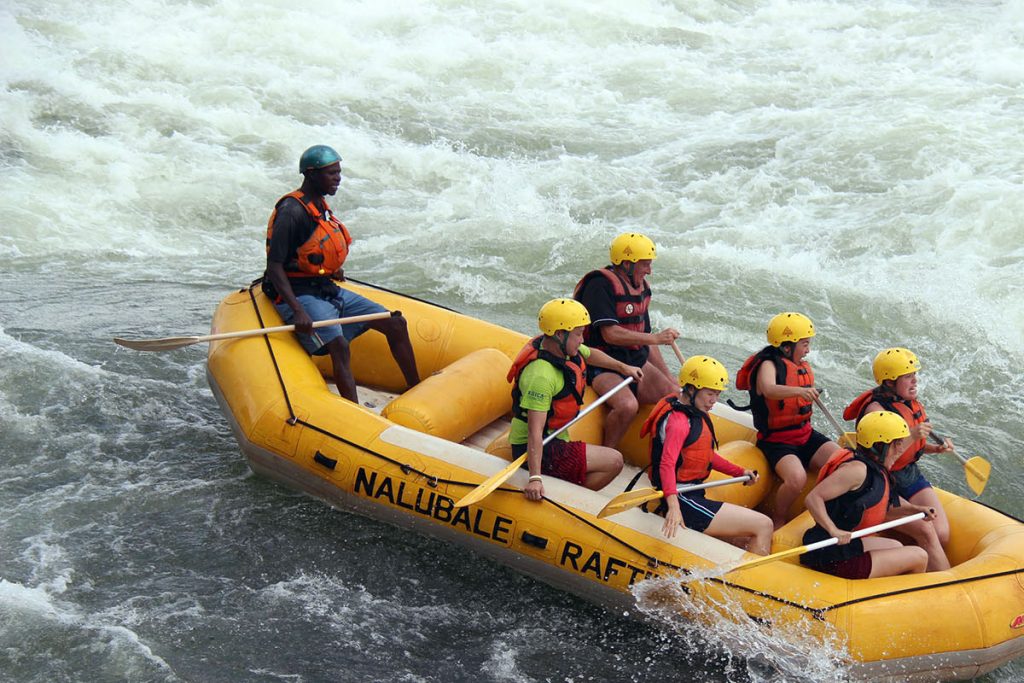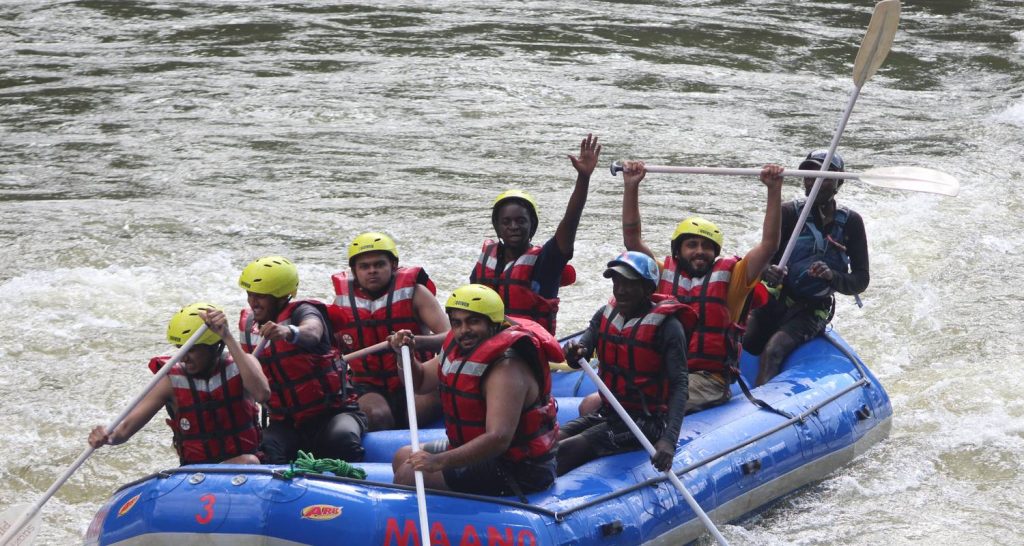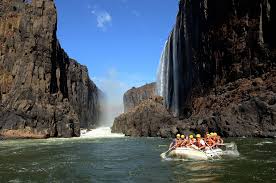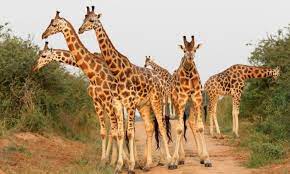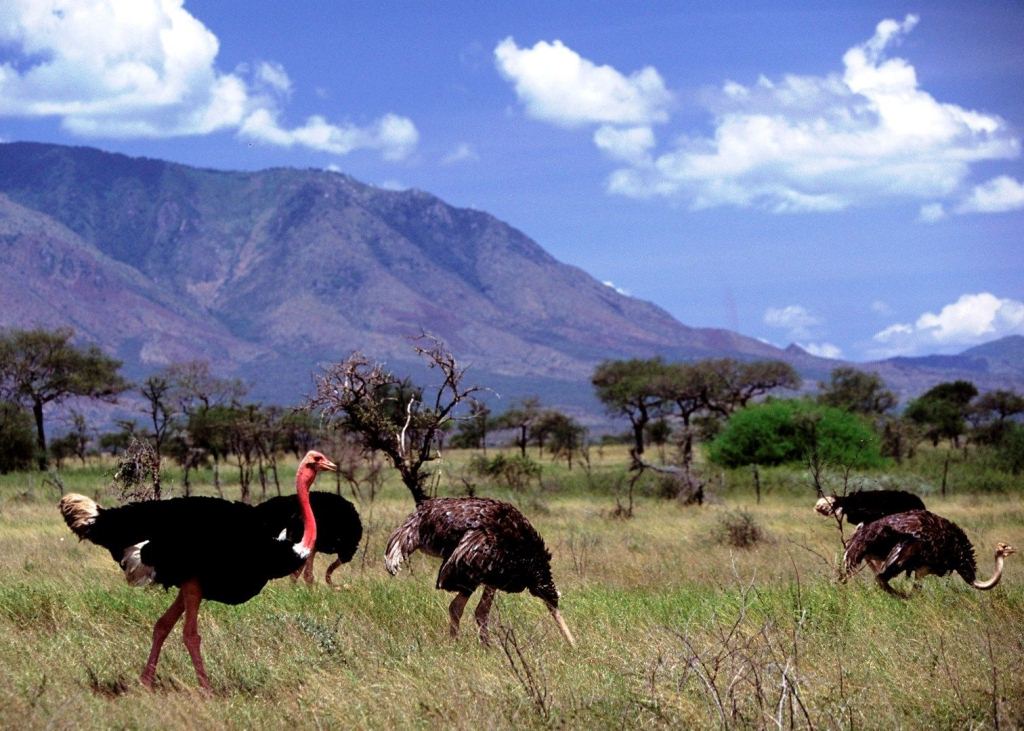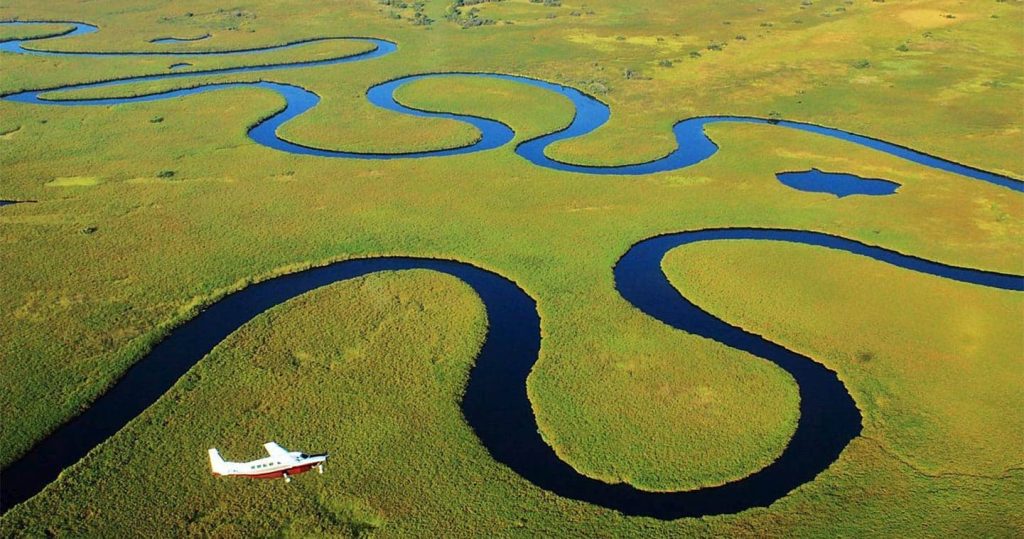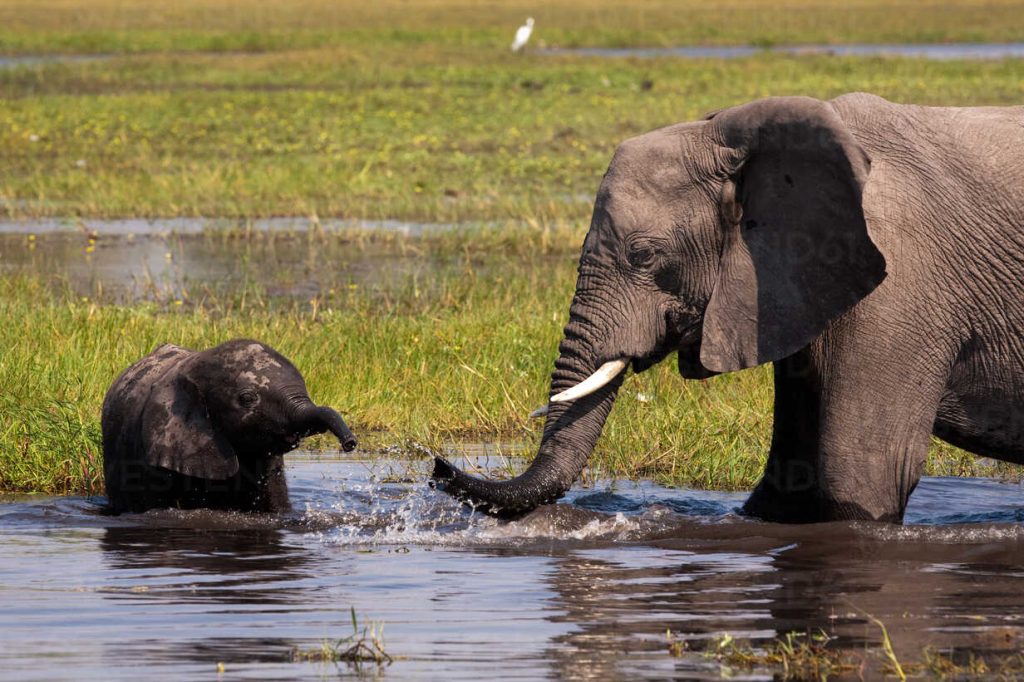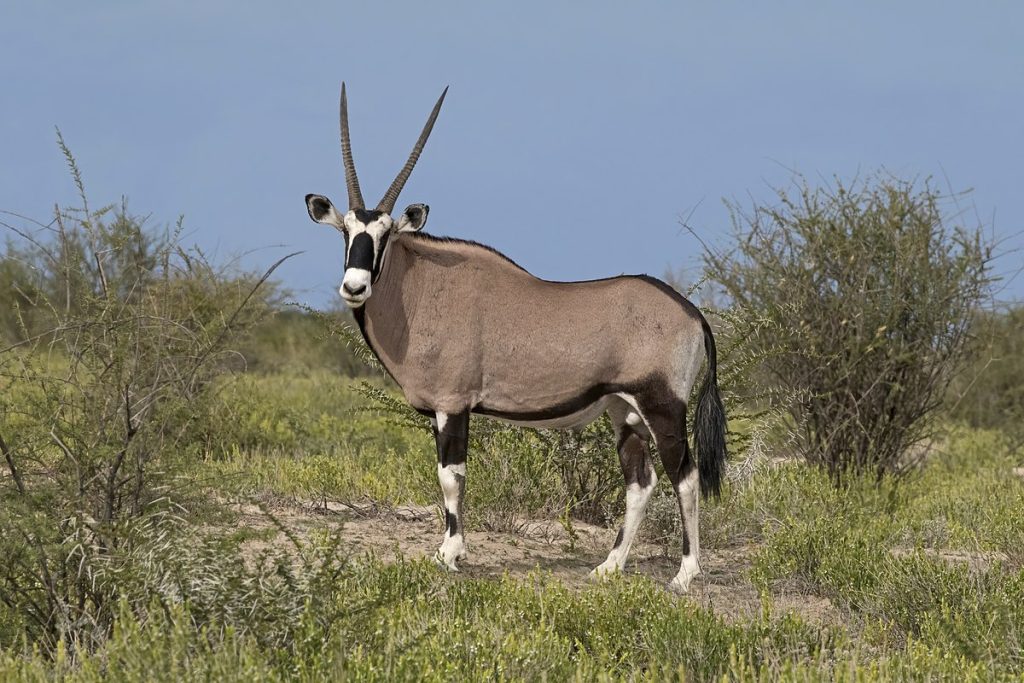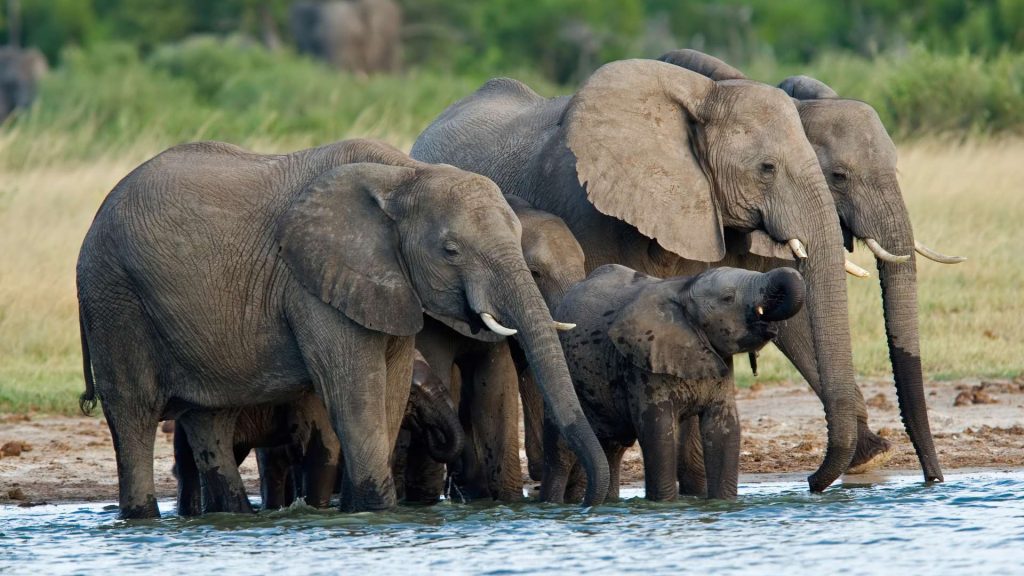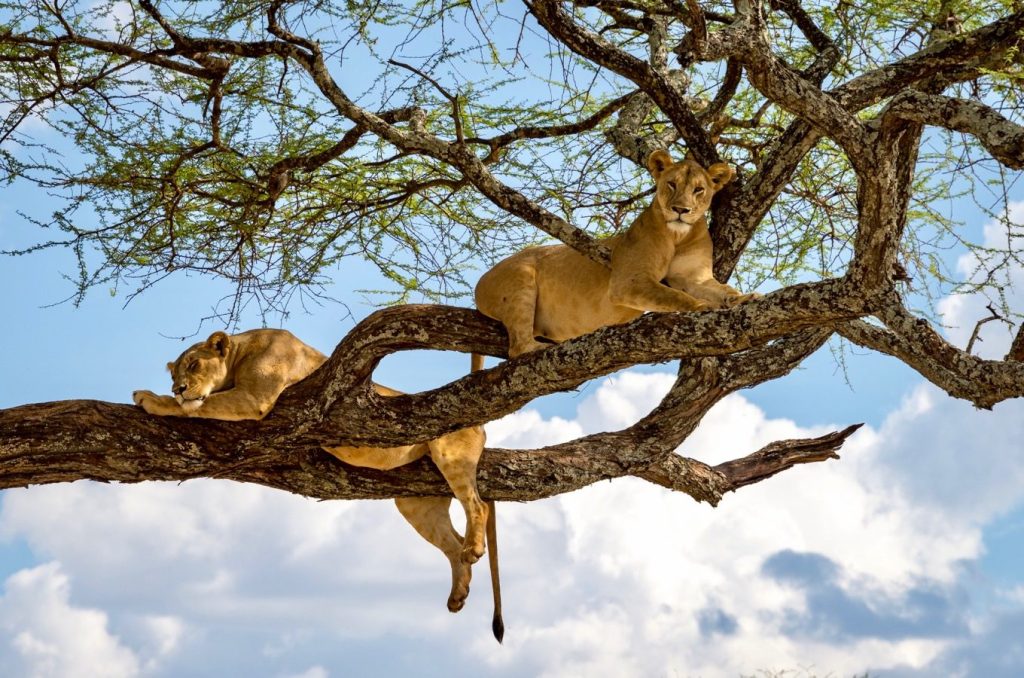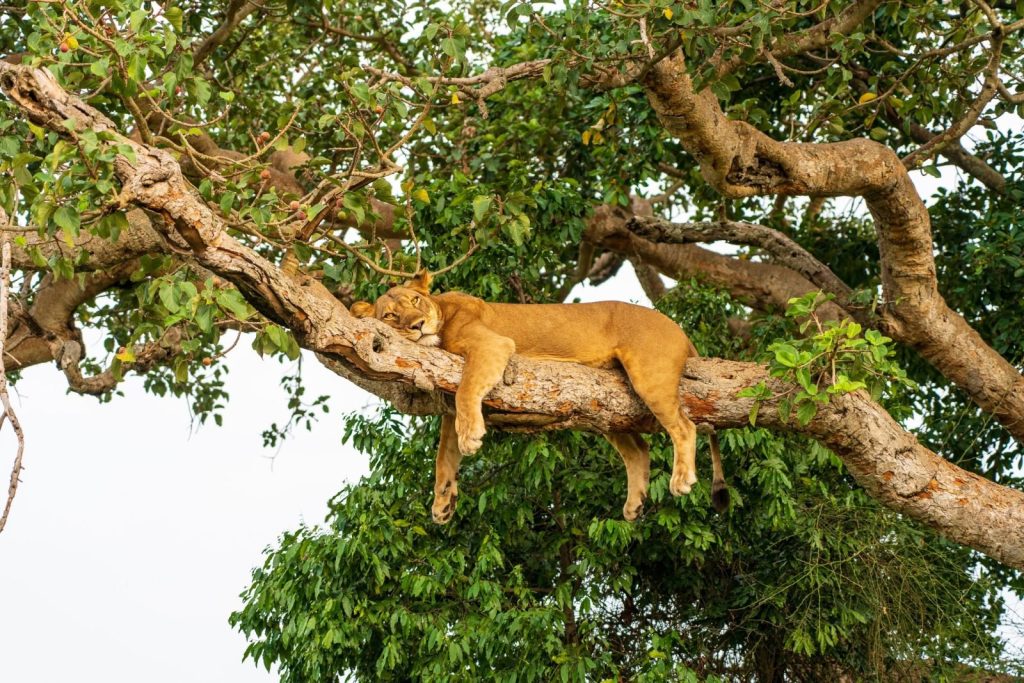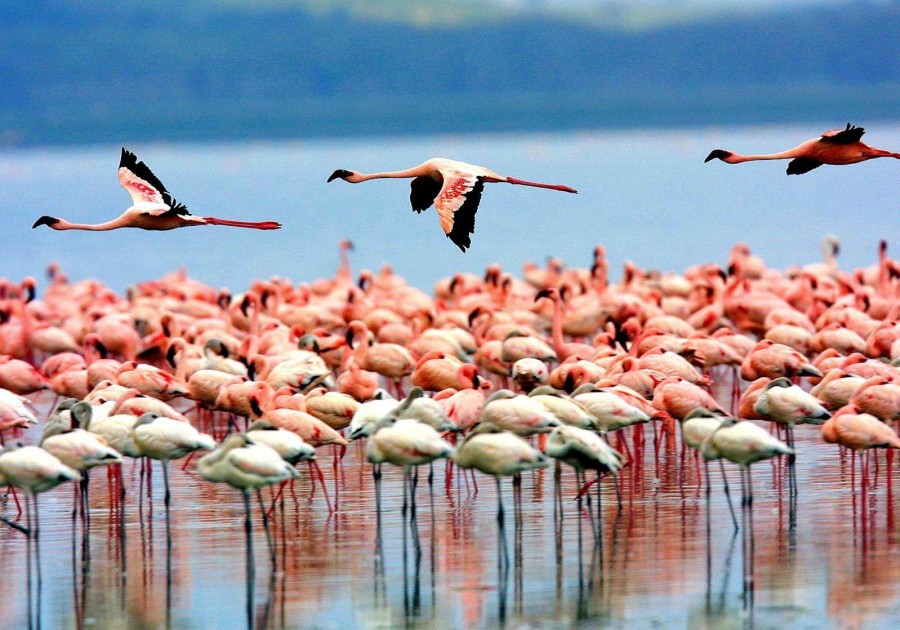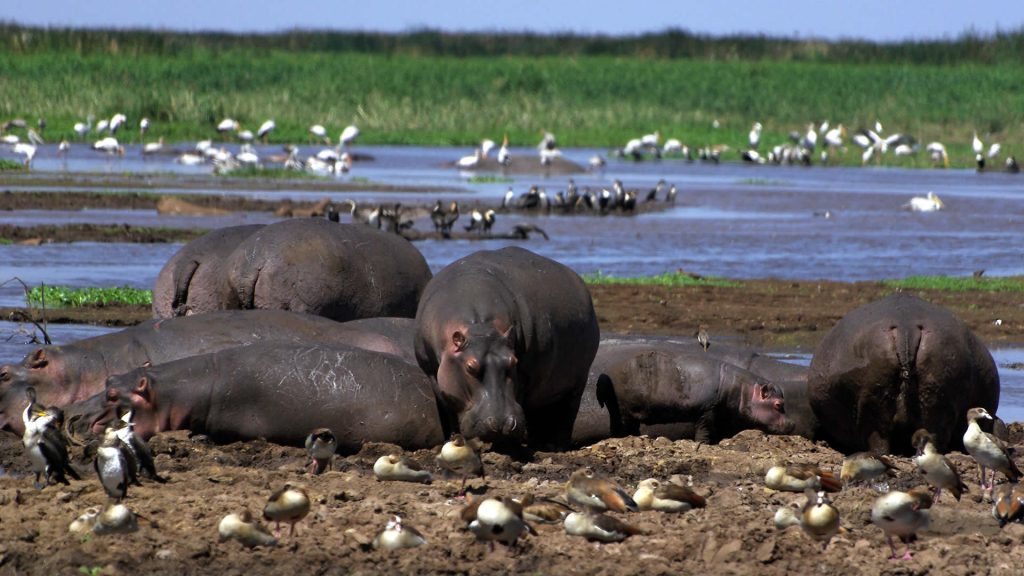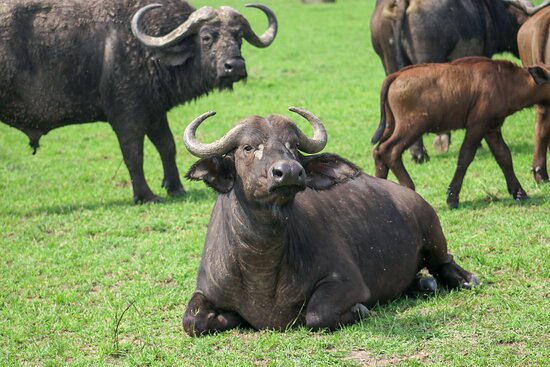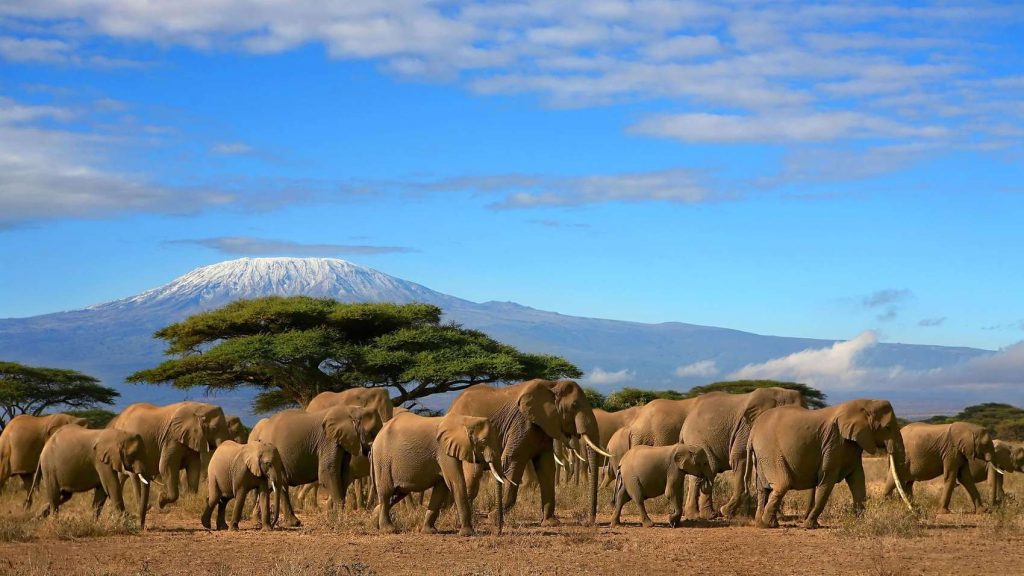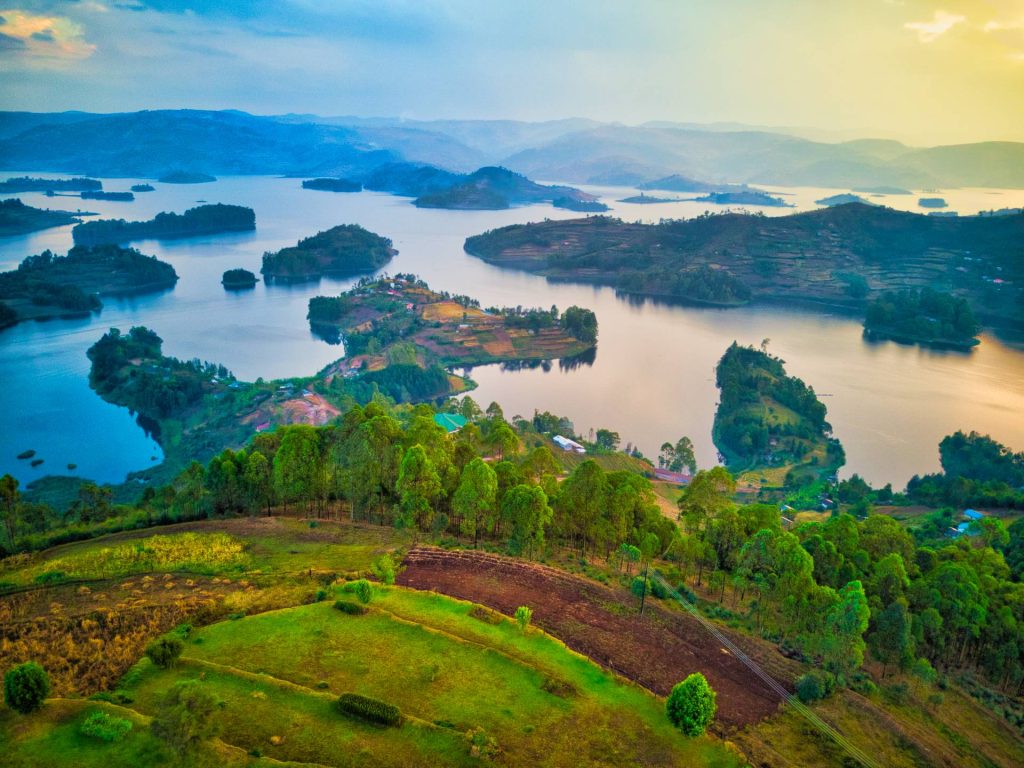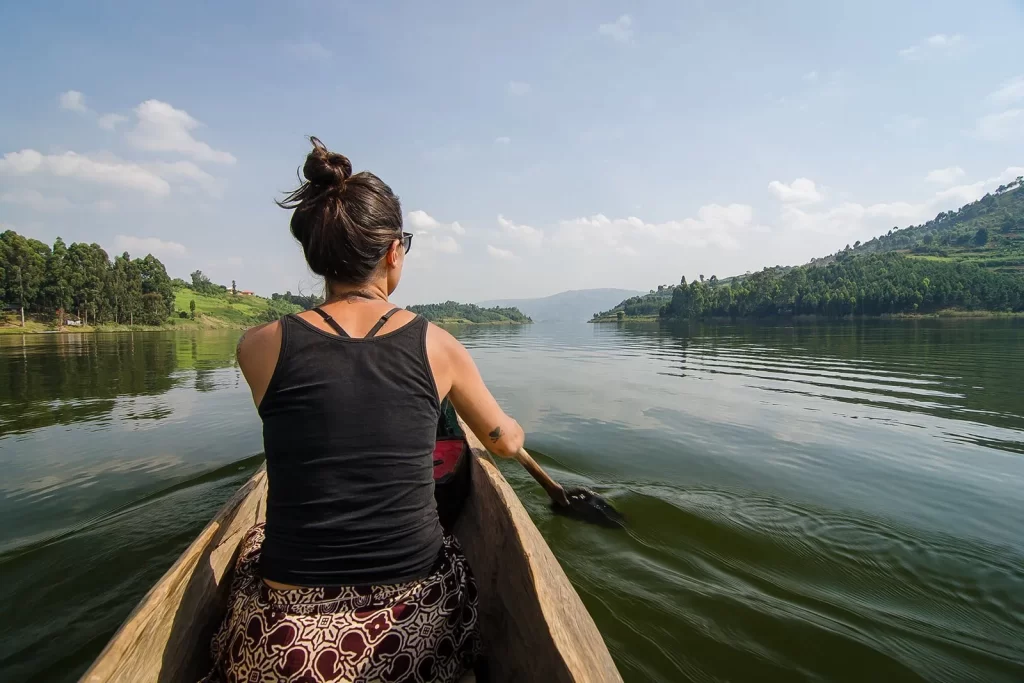Size Area: 1,978 km2 (764 sq mi)
Queen Elizabeth National Park is the most popular savanna park in Uganda and the best place to see lions including the Tree Climbing lions making it the perfect destination for a Uganda Wildlife Safari. It prides in a great diversity of habitats that include: lakes, savannah grasslands, forests and wetlands that serve as home to the biggest variety of large mammals in the country. The Park spans the equator line; monuments on either side of the road marking the exact spot where it crosses latitude 00.
The park was founded in 1952 as Kazinga National Park and renamed two years later to commemorate a visit by Queen Elizabeth II of England. The park is home to over 95 mammal species and over 600 bird species. The explosion craters located in Katwe mark the park’s highest point at 1,350m above sea level, while the lowest point is at 910m, at Lake Edward. Not to forget Queen Elizabeth National Park’s Ishasha located south west is a home to the tree climbing lion in Uganda, It is uncommon for lions to actually climb trees. There are no more than 2 populations in whole world of such lions that do actually climb trees as one of their day after day behavior. The park is known for its abundant wildlife, including African elephant, African buffalo, Ugandan kob, hippopotamus, topi, waterbuck, warthog, giant forest hog, Nile crocodile, leopard, spotted hyena, chimpanzee and lion.
(2) Lake Mburo National Park – Uganda
Type of park: Thorn bush Savannah.
Size Area: 260 km²
Lake Mburo National Park is Uganda’s smallest national park and the closest park to both Kampala and Entebbe. The Park is famous for the impala antelopes though it has a vast population of wildlife ranging from zebra, eland, buffalo, oribi, defassa water backs, leopard, hyena, hippopotamus, reed back. The park Offers a lot of animals for the traveler to enjoy the safari.
(3)Gorilla trekking in Africa
Gorilla trekking is defined as a hike to the tropical forests of Africa to see the mountain gorillas in their natural habitat. Below are some of the places you can choose to go gorilla trekking in Africa.
(a)Bwindi impenetrable national park- Uganda
Type of Park: Dense vegetation impenetrable rainforest
Location: South western Uganda- Africa.
Trekking Permit cost: $700 per person per trek.
Bwindi Impenetrable National Park lies in southwestern Uganda on the edge of the Rift Valley. Its mist-covered hillsides are blanketed by one of Uganda’s oldest and most biologically diverse rain forests, which dates back over 25,000 years and contains almost 400 species of plants. More famously, this “impenetrable forest” also protects an estimated 400 mountain gorillas – roughly half of the world’s population, including several habituated groups, which can be tracked.
This biologically diverse region also provides shelter to a further 120 mammals, including several primate species such as baboons and chimpanzees, as well as elephants and antelopes. There are around 350 species of birds hosted in this forest, including 23 Albertine Rift endemics.
The neighboring towns of Buhoma and Nkuringo both have an impressive array of luxury lodges, rustic bandas, and budget campsites, as well as restaurants, craft stalls, and guiding services. Opportunities abound to discover the local Bakiga and Batwa Pygmy cultures through performances, workshops, and village walks.
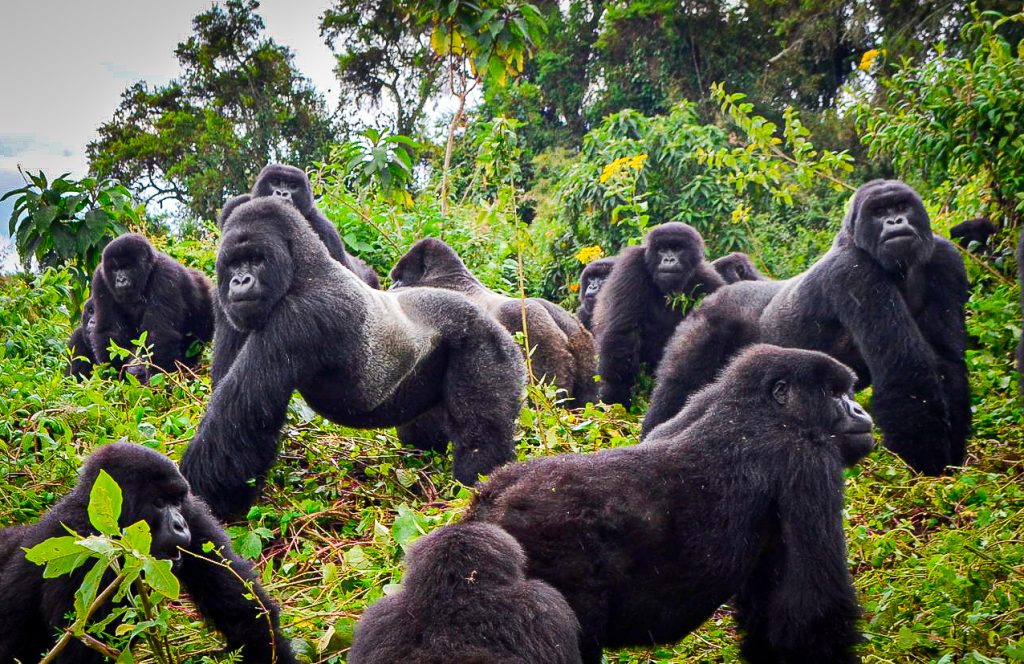
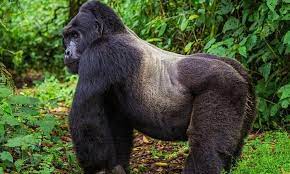
(b)Mgahinga Gorilla National Park Uganda
Location: South western Uganda- Africa.
Trekking Permit cost:$700 per person per trek.
Mgahinga Gorilla National Park is a national park in southwestern Uganda. It was created in 1991 and covers an area of 33.9 km². Mgahinga Gorilla National Park sits at a high altitude of between 2,227m and 4,127m. As its name suggests, it was created to protect the rare mountain gorillas that inhabit its dense forests, and it is also an important habitat for the endangered golden monkey. The name Mgahinga was derived from the Kinyarwanda word “Gahinga” that means “Pile of volcanic lava stone heaps where cultivation is carried out”.
(c)Virunga National Park- Rwanda
Trekking Permit cost:$1,500 per person per trek
Virunga National Park is a national park located within the Albertine Rift Valley in the south eastern part of the Democratic Republic of the Congo and north eastern republic of Rwanda. Virunga National Park is Africa’s most biodiverse protected area, home to over one thousand species of mammal, bird, reptile, and amphibian as well as 1/3 of the world’s endangered mountain gorillas.
Located on the eastern edge of the Congo Basin, the world’s second-largest tropical rainforest, Virunga has become known as the park of fire and ice for its diverse habitats ranging from the Rwenzori peaks to savanna and volcanic plains.
Despite being a UNESCO world heritage site, Virunga is constantly threatened by war, poaching and illegal activities as well as unpreventable natural disasters. With the support of donors, the Virunga Foundation actively conserves the Park which spans over 3,000 square miles.
(4) Chimpanzee trekking in Africa
Chimpanzee Tracking (trekking) is the activity where travelers with the help of a guide through the jungle follow the trail left by a habituated chimpanzee family and when they find them, spend sometime (usually an hour) with the chimps experiencing their cultures.
Chimpanzees are close cousins to man with almost 98% DNA; they live in huge communities of about 20-70 individuals with many family groups with one alpha male. The Alpha male is the highest-ranking male that controls the group and maintains order during arguments, in chimpanzee society male chimps normally stay within their communities were they are born while females frequently move to the neighboring communities after reaching adolescence, Chimpanzees consume a variety of foods like fruits and plants that man eats, and the fruit of fig trees.
(a)Best Location: Kibale National park Uganda
type of park: Rain forest
Uganda is the most well known destination for gorilla and chimpanzee trekking in Africa.
The Kibale Forest National Park, located in western Uganda, is known to be the home to the close relatives of humans, chimpanzees. It contains a diverse array of landscapes and Kibale is one of the last remaining expanses to contain both lowland and montane forests. In eastern Africa, it sustains the last significant expanse of pre-montane forest.
Type of park: Rain forest
Budongo Forest reserve is located in Western part of Uganda approximately a 4 hours drive from the Uganda capital Kampala right before you enter the Murchison Falls National Park. Budongo Forest covers an area of 793 sq km, 53% is complete montane forest and the other area is grassland. This forest reserve is home to different wildlife species such as over 359 bird species, 465 species of trees, 9 primate species, 289 butterfly species, and 24 species of mammals as well as 130 species of moths. Budongo forest is also famous for mahogany trees and a big number of Chimpanzees approximately 600 to 700 chimpanzees.
The reserve has 6 groups of welcomes chimpanzee tracking travelers all year round boasting of 6 habituated chimp groups in the area. There’s always a high chance of seeing the primates in Budongo forest Trekking starts at 7:00 am as you are led by the ranger guides to look for these amazing primates that share a DNA of about 98% with the human beings. Chimpanzee trekking can take you 30 minutes or even a full day, how long it takes is mainly dependent on the location of these primates. The Budongo forest reserve is managed both by the Uganda wildlife Authority (UWA) and the Jane Good all Institute.
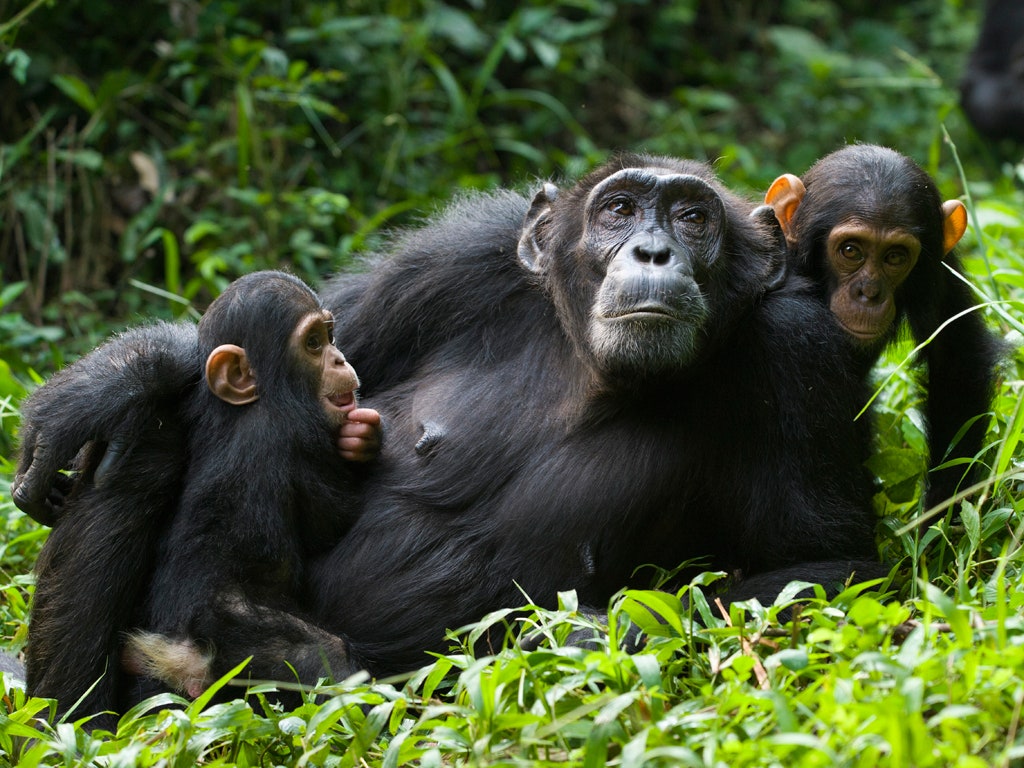
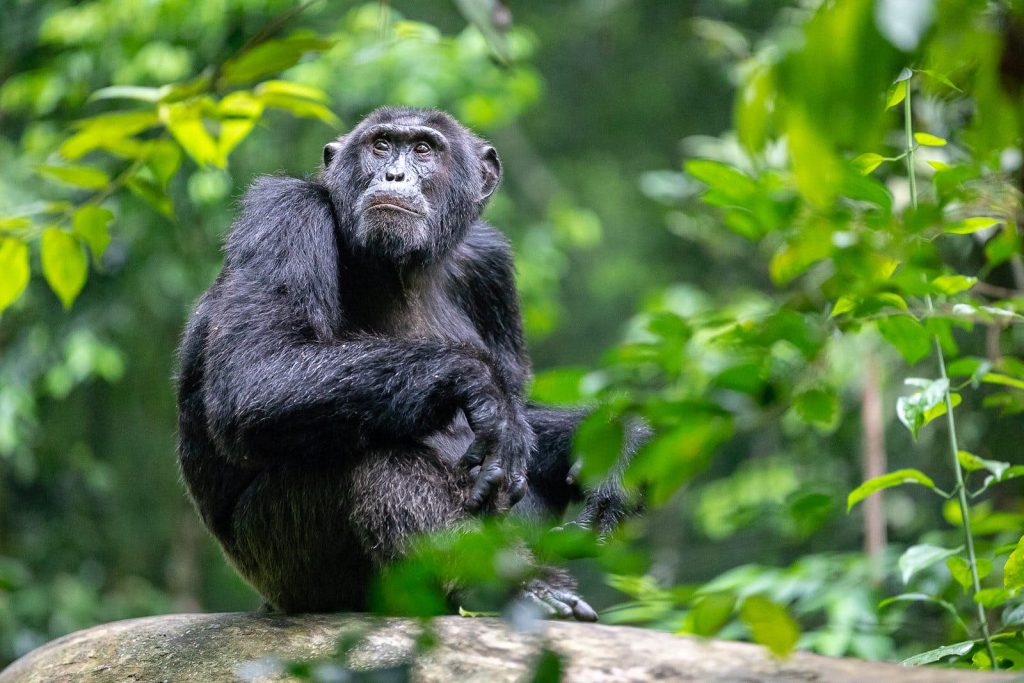
(c) Kyambura gorge forest-Uganda
South-west Uganda bordering the southeast of the Kazinga Channel and the south shore of Lake George. 0°05’S, 30°05’E. Altitude 700- 1,1 00m Area 15,700ha; contiguous to Queen Elizabeth National Park (197,800ha) and its associated reserves Uganda Land Tenure Government Physical Features.
The terrain is characterized by small hills and about 10 crater lakes above the east wall of the western Rift Valley (here interrupted by the vast upheaval of the Ruwenzori range).
The area also contains a number of swamps. The boundary with Queen Elizabeth National Park is defined by the Kyambura River which flows into the Kazinga Channel.
Vegetation Savanna grassland and deciduous thickets. The fauna is similar to Queen Elizabeth National Park with mammals including hippopotamus Hippopotamus amphibius, lion Panthera leo, leopard Panthera pardus, elephant Loxodonta africana, buffalo Syncerus caffer, and a variety of antelope and other small ungulates. Waterbirds feature prominently in the avifauna including occasional visits by lesser flamingo Phoeniconaias minor. Chimpanzee trekking is the main activity at Kyambura gorge, the habituated chimpanzees can be seen by visitors.
(d)Kalinzu forest-Uganda
Kalinzu Forest is a forest thicket in western Uganda located in Queen Elizabeth National Park. The forest is known for chimpanzee tracking. The Forest Reserve is located in Bushenyi District in western Uganda. It is approximately 375 km. (five hours drive) from the Capital City of Kampala.
(5)White water rafting in Africa
(A)Rafting on River Nile Jinja Uganda
Jinja is in Jinja District, Busoga sub-region, in the Eastern Region of Uganda. It is approximately 81 kilometres (50 mi), by road, east of Kampala, the capital and largest city of Uganda
It sits along the northern shores of Lake Victoria, near the source of the White Nile. The city sits at an average elevation of 1,204 metres (3,950 ft) above sea level.
The city was founded in 1901 by British settlers. It was planned under colonial rule in 1948 by Ernst May, German architect and urban planner. May also designed the urban planning scheme for Kampala, creating what he called “neighborhood units.” Estates were built for the ruling elite in many parts outside the center city. This led to the area’s ‘slum clearance’ which displaced more than 1,000 residents in the 1950s.
In 1954, the construction of the Owen Falls Dam submerged the Ripon Falls. Most of the “Flat Rocks” that gave the area its name disappeared under water as well. The local Baganda called the area “the stones” which is “Mayinja” in Luganda. The name “Jinja” is derived from this. A description of what the area looked like can be found in the notes of John Hanning Speke, the first European to lay eyes on the source of the Nile:
(B)Zambezi white water rafting in Zimbabwe.
The Zambezi River (also spelled Zambezi and Zambesi) is the fourth-longest river in Africa, the longest east-flowing river in Africa and the largest flowing into the Indian Ocean from Africa.
The area of its basin is 1,390,000 square kilometres (540,000 sq mi), slightly less than half of the Nile’s. The 2,574-kilometre-long river (1,599 mi) rises in Zambia and flows through eastern Angola, along the north-eastern border of Namibia and the northern border of Botswana, then along the border between Zambia and Zimbabwe to Mozambique, where it crosses the country to empty into the Indian Ocean.
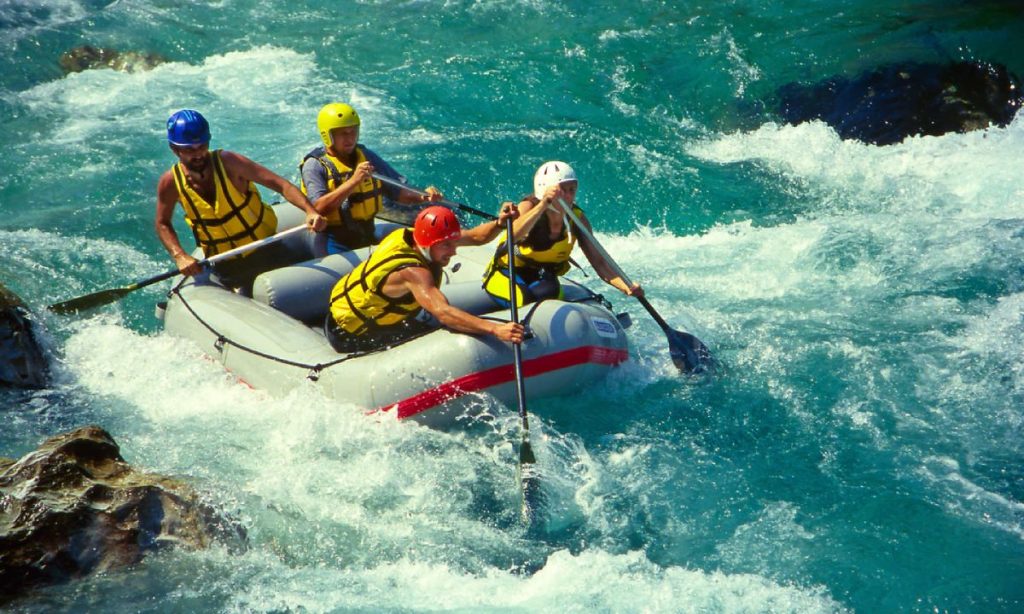
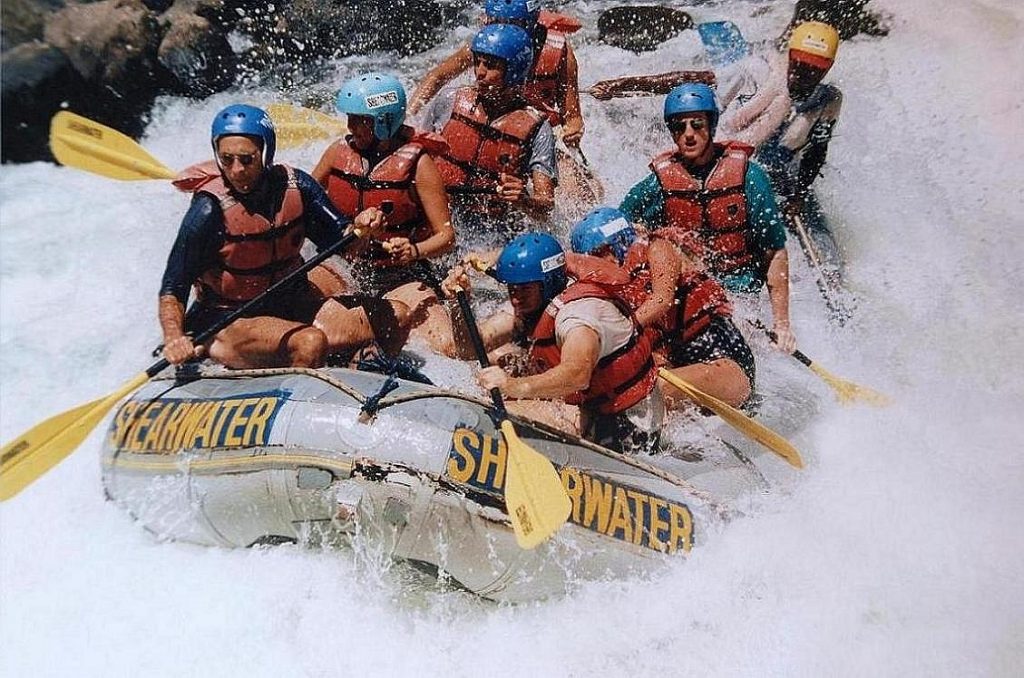
The region drained by the Zambezi is a vast broken-edged plateau 900–1200 m high, composed in the remote interior of metamorphic beds and fringed with the igneous rocks of the Victoria Falls.
At Shupanga, on the lower Zambezi, thin strata of grey and yellow sandstones, with an occasional band of limestone, crop out on the bed of the river in the dry season, and these persist beyond Tete, where they are associated with extensive seams of coal. Coal is also found in the district just below Victoria Falls. Gold-bearing rocks occur in several places.
Type of park: Valley woodland savanna
Location: Uganda
Area size: 1,442km2
Kidepo Valley National Park lies in the rugged, semi arid valleys between Uganda’s borders with Sudan and Kenya, some 700km from Kampala. Gazetted as a national park in 1962, it has a profusion of big game and hosts over 77 mammal species as well as around 475 bird species.
Kidepo is Uganda’s most isolated national park, but the few who make the long journey north through Karamoja would agree that it is also the most magnificent, for Kidepo ranks among Africa’s finest wildernesses.
From Apoka, in the heart of the park, a savannah landscape extends far beyond the gazetted area, towards horizons outlined by distant mountain ranges. During the dry season, the only permanent water in the park is found in wetlands and remnant pools in the broad Narus Valley near Apoka. These seasonal oases, combined with the open, savannah terrain, make the Narus Valley the park’s prime game viewing location.
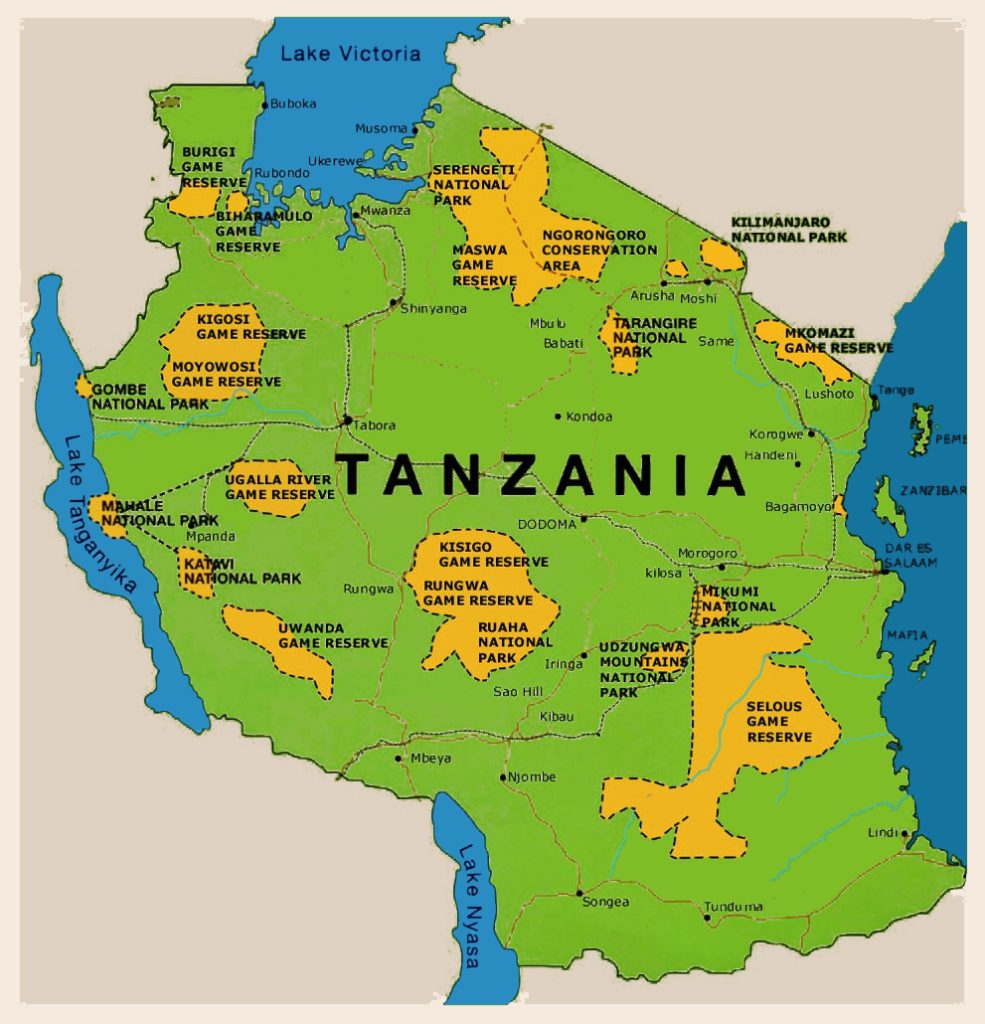
Type of park: Open Savannah grassland
Size Area: 14,763 km²
The Serengeti ecosystem is a geographical region in Africa, spanning northern Tanzania. The protected area within the region includes approximately 30,000 km² of land, including the Serengeti National Park and several game reserves and is famous for its annual wildebeest migration, when some 8 million hooves cross the open plains, as more than 1,500,000 wildebeest, 200,000 zebra and 300,000 Thomson’s gazelle join the trek for fresh grazing. Predators follow the migration and sightings of big cats hunting is particularly exciting.
In addition to more than 35 species of plains animals, there are some 3,000 lions and great numbers of spotted hyenas, leopards, rhinoceroses, hippopotamuses, giraffes, cheetahs, and baboons. Crocodiles inhabit the marshes near the Mara River.
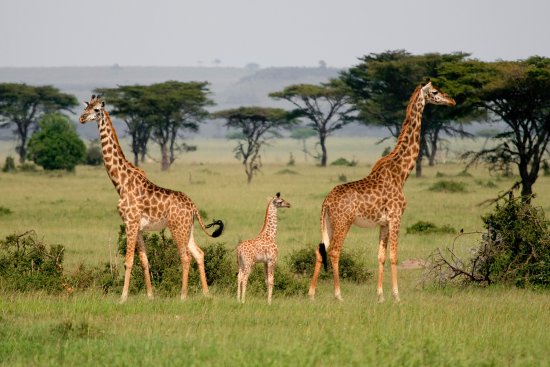
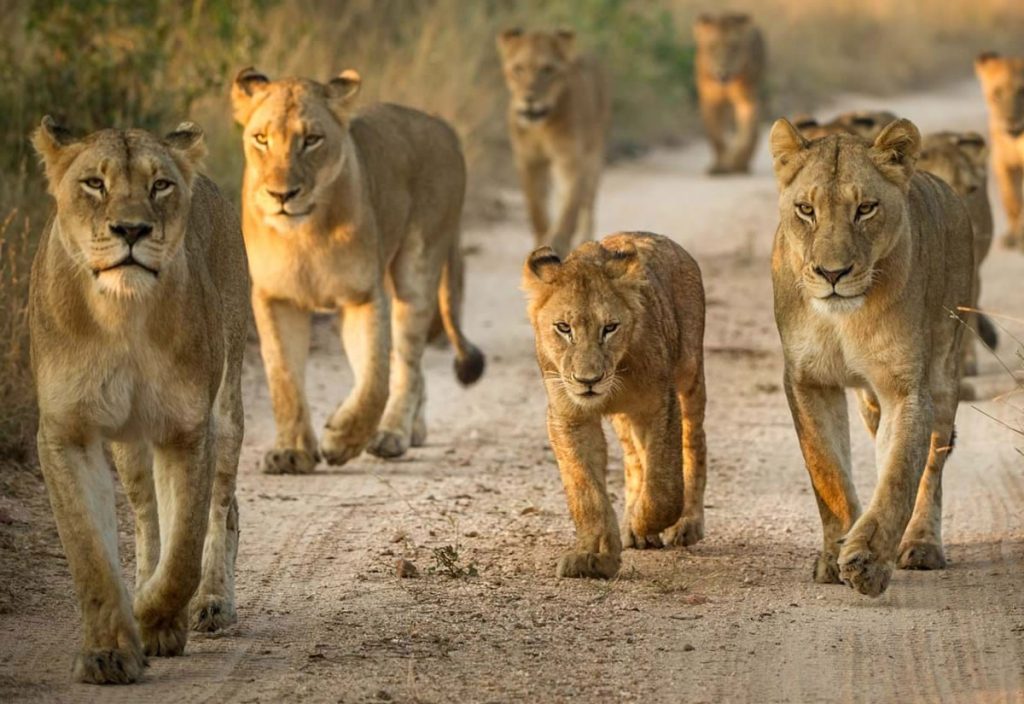
(8)Kruger National park South Africa:
Location: South Africa
Type of park: dry savanna biome
Size:19,485 km²
Kruger National Park, in northeastern South Africa, is one of Africa’s largest game reserves. Its high density of wild animals includes the Big 5: lions, leopards, rhinos, elephants and buffalos.
Hundreds of other mammals make their home here, as do diverse bird species such as vultures, eagles and storks. Mountains, bush plains and tropical forests are all part of the landscape, and is famous forlarge mammal species than any other park in Africa. Besides the famous Big 5: elephant, lion, rhino, leopard and buffalo – there is a wealth of antelope species, warthogs, ostriches, zebra, wildebeest, hyena, cheetah, wild dogs and many smaller animals like otters, mongoose and shrews.
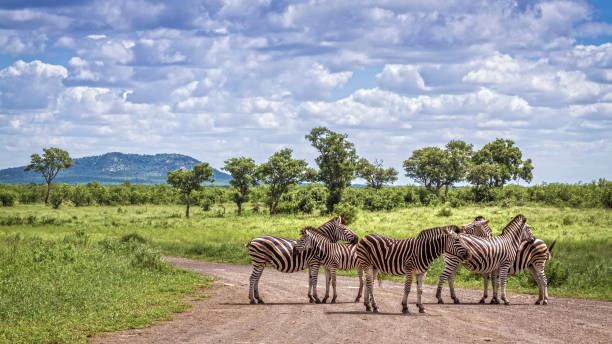
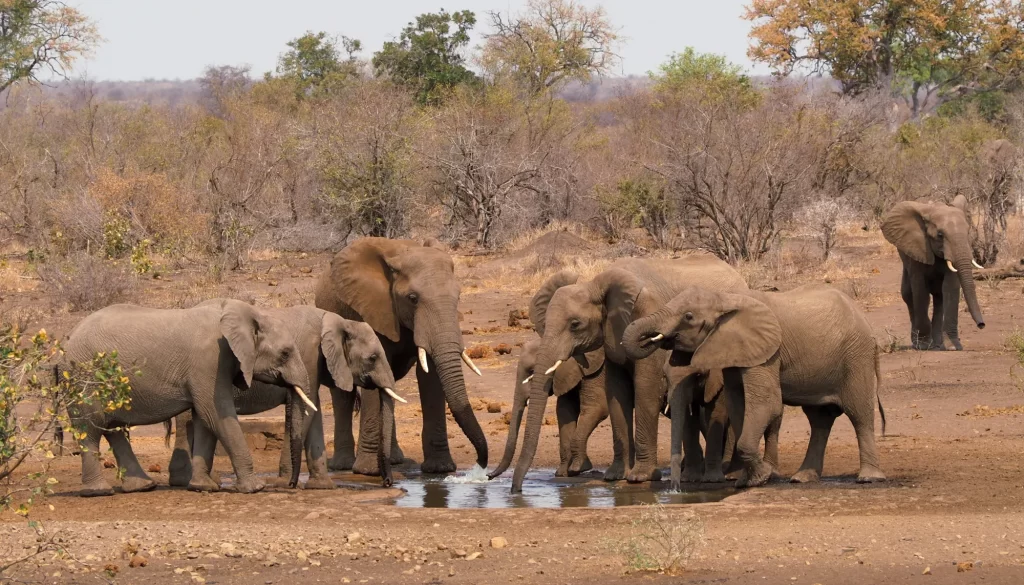
(9) Victoria Falls
Type of park: Cataract water fall
Location: Border between Zambia and Zimbabwe
Height: 108 Meters (360ft)
Victoria Falls is a waterfall on the Zambezi River in southern Africa, which provides habitat for several unique species of plants and animals. It is located on the border between Zambia and Zimbabwe and is considered to be one of the world’s largest waterfalls due to its width of 1,708 m. And famous for being one of the Seven Natural Wonders of the World and the major waterfall on the Zambezi River in Africa. It is famous for being the largest waterfall in the world, in the wet season. The African people who live around the falls call it Mosi-oa-Tunya which means “smoke that thunders”.
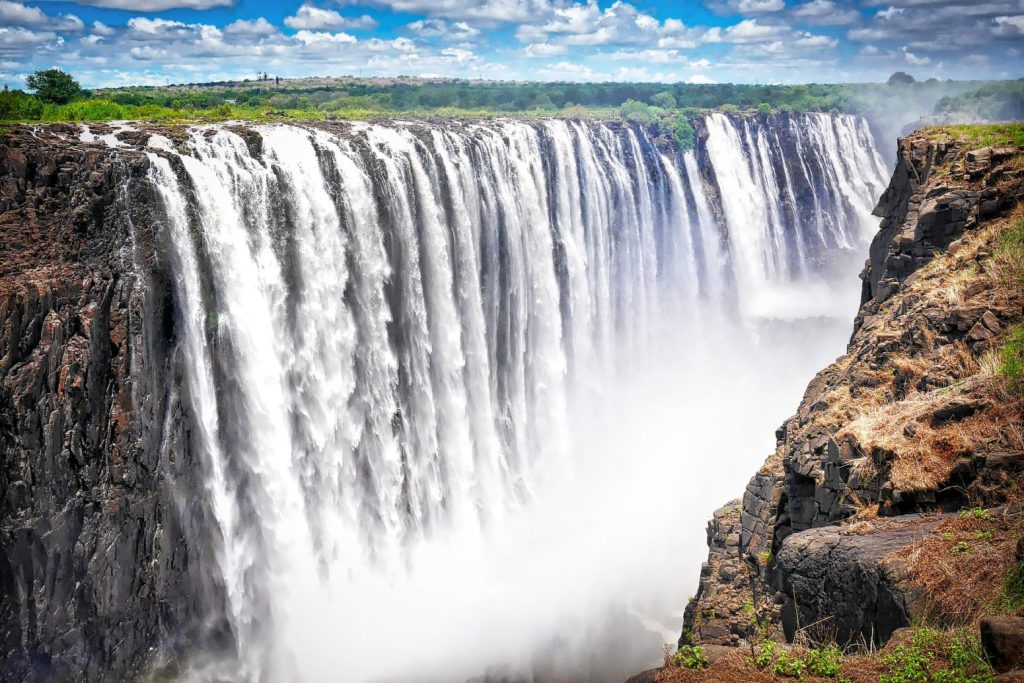
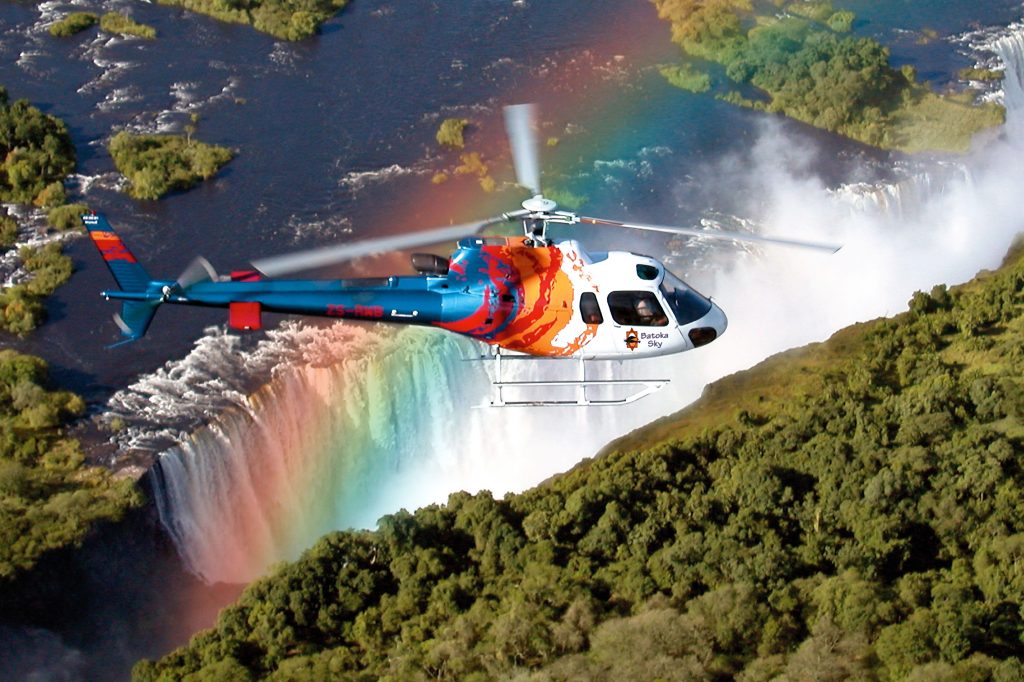
(10)Etosha National Park-Namibia
Type of park: Desert savanna
Location: Northern Namibia
Area Size: 22,270 km2 (8,600 sq mi)
Etosha National Park is unique in Africa. The park’s main characteristic is a salt pan so large it can be seen from space. Yet there is abundant wildlife that congregates around the waterholes, giving you almost guaranteed game sightings.
The park is a home to large mammals including lion, leopard, elephant, rhino, giraffe, wildebeest, cheetah, hyena, mountain and plains zebra, springbok, kudu, gemsbok and eland. Among the smaller species you will find jackal, bat-eared fox, warthog, honey badger and ground squirrel. At the same time Etosha National Park is one of the most accessible game reserves in Namibia and Southern Africa. And is famous for its wildlife like lion, elephant, leopard, giraffe, cheetah, hyena, springbok, two kinds of zebra, eland and many more species of wildlife are found here.
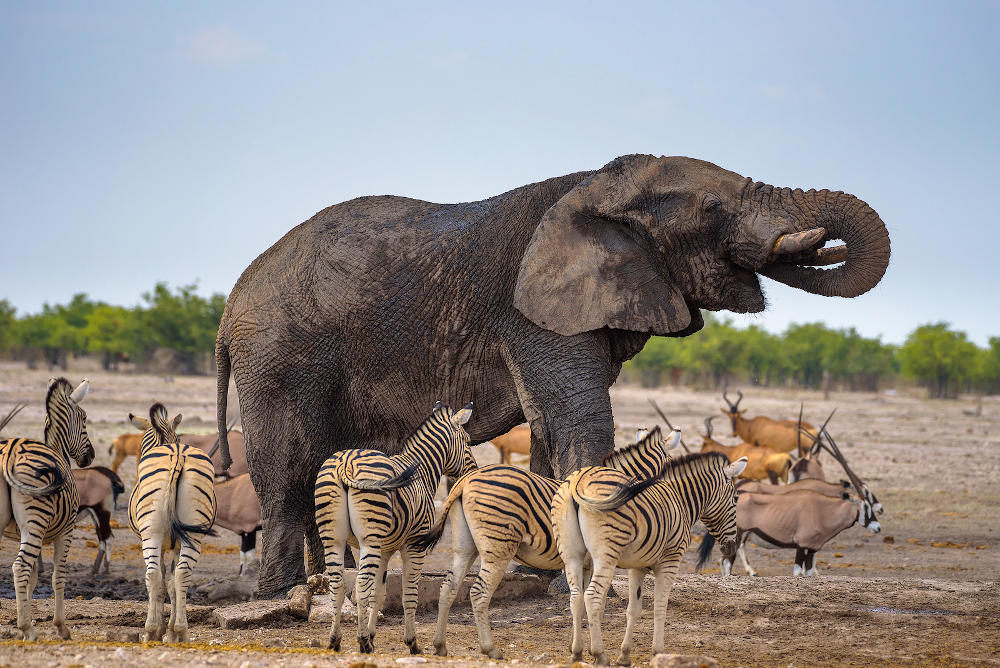
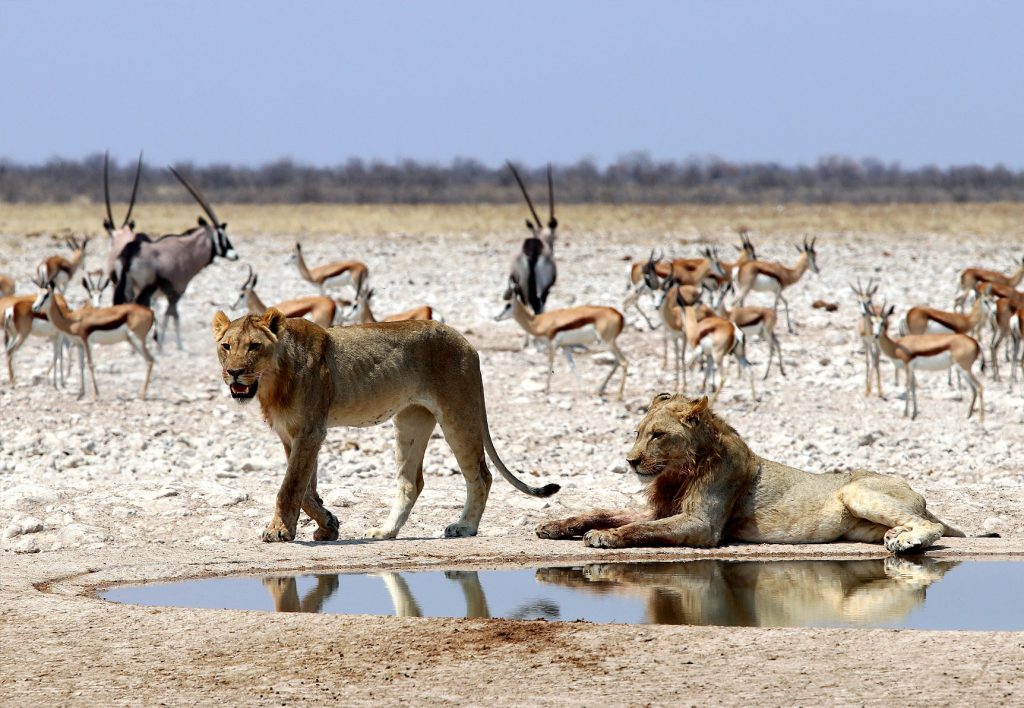
Type of park: Flooded swampy grassland savanna
Location: Northern Botswana
Area Size:16,000 sq. km
The Okavango Delta Grassland in Botswana is a swampy inland delta formed where the Okavango River reaches a tectonic trough at an altitude of 930–1,000 m[3] in the central part of the endorheic basin of the Kalahari.
You can expect to see lechwe, sitatunga, reedbuck, bushbuck, hippo, crocodile, elephant, buffalo, zebra, giraffe, wildebeest, impala and tsessebe. Predators – including lion, hyena, wild dog, leopard and cheetah – have also adapted to life in the delta, as have many smaller creatures. Okavango Delta is so special that it Floods to over 15,000 square kilometres, the Okavango Delta is the world’s largest inland Delta.
Unlike most Deltas, the flood waters span out onto land and not water, making it an unquestionably unique destination.
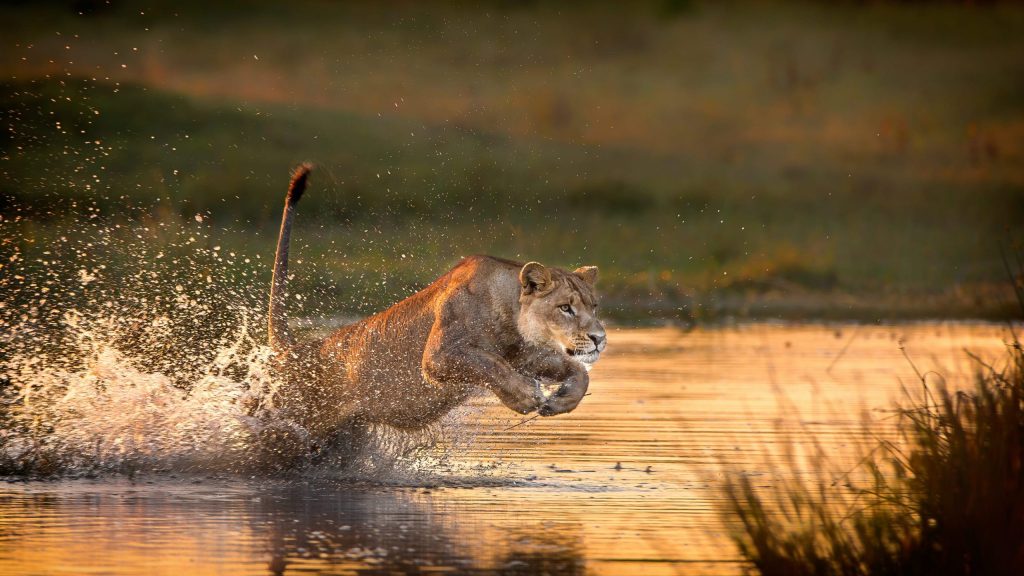
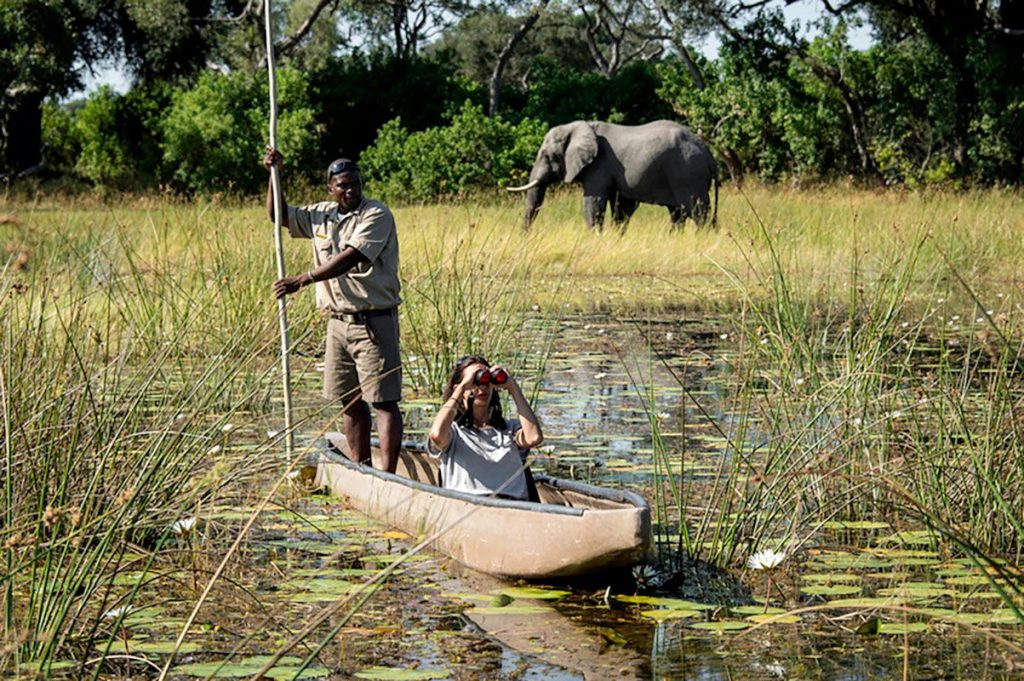
All the water reaching the delta is ultimately evaporated and transpired and does not flow into any sea or ocean.
Each year, about 11 cubic kilometres (2.6 cu mi) of water spread over the 6,000–15,000 km2 (2,300–5,800 sq mi) area. Some flood waters drain into Lake Ngami.[4] The area was once part of Lake Makgadikgadi, an ancient lake that had mostly dried up by the early Holocene. And famous for its rich wildlife, water-based safaris and commitment to low-impact tourism. The delta is a fascinating region to discover.
(12) Chobe National Park- Botswana
Type of park: Open humid savanna woodland
Location: Botswana
Area size:11,700 km²
Chobe National Park is in northern Botswana near the vast, inland Okavango Delta. It’s known for its large herds of elephants and Cape buffalo, which converge along the Chobe Riverfront in the dry months. Lions, antelopes and hippos inhabit the woods and lagoons around Linyanti Marsh. The floodable grasslands of the Savuti Marsh attract numerous bird species, plus migrating zebras.
Located in the north of Botswana, Chobe National Park is famous for its elephants, its diverse habitats, its varied array of animals and birds and its beautiful river, which allows for amazing game viewing by boat.
Wildlife in Chobe National Park include African painted dog, blue wildebeest, Cape buffalo, civet, crocodile, giraffe, hippopotamus, hyena, leopard, lion, puku (a type of antelope, assessed Near Threatened), savanna elephant, tseessebe, zebra, and much more.
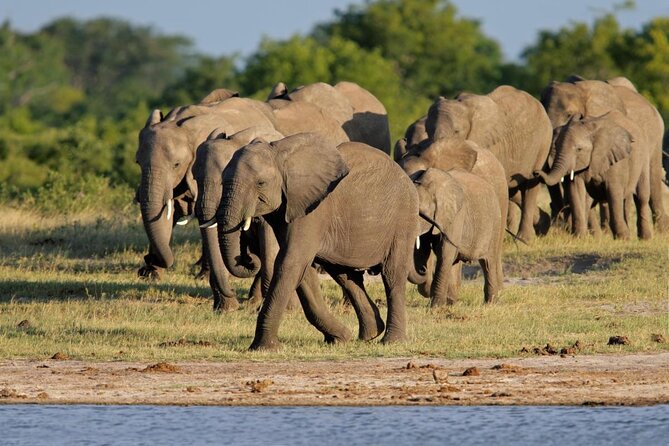
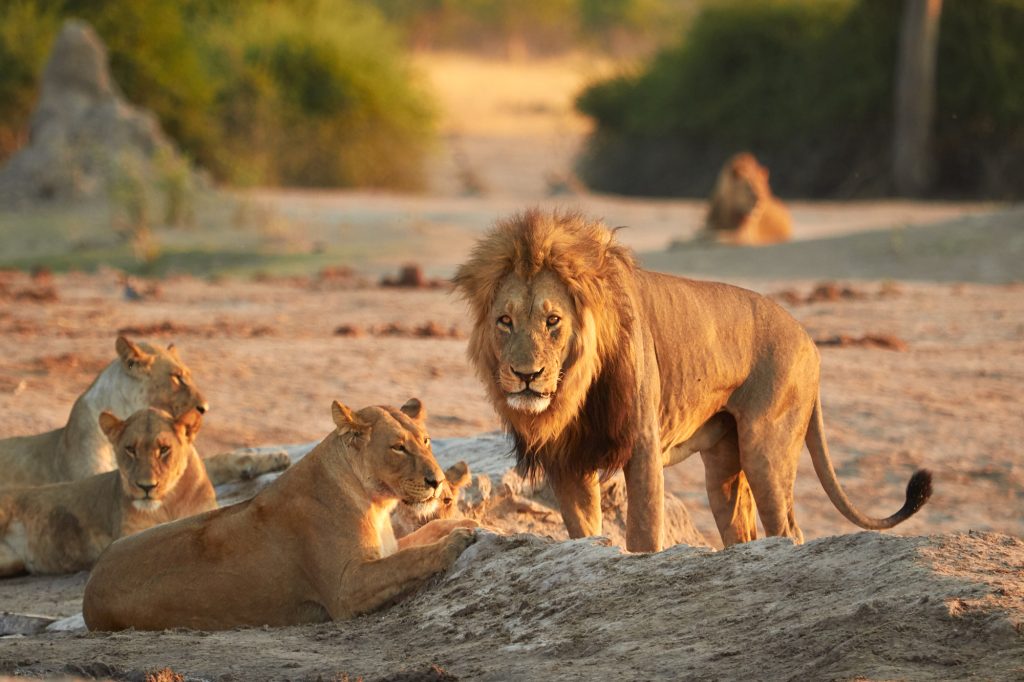
Type of park: Grassland mopane woodland
Location: Zimbabwe
Area size:15 000 km²
Hwange National Park is in west Zimbabwe. Its grasslands and mopane woods are home to large elephant herds, lions and African wild dogs. In the northwest, animals gather at Mandavu and Masuma dams, where there are concealed lookouts. Bumbusi National Monument includes 18th-century ruins and pre-colonial rock carvings. In the southeast, waterholes include the Nyamandhlovu Pan, with its elevated viewing platform. Hwange is the largest national park of Zimbabwe’s . At this immense wildlife reserve is packed with big game and is famous for massive numbers of buffalo and – in particular – its elephant herds.
(B) Lake Manyara national park Tanzania
The lions in the Lake Manyara National Park, in Tanzania, are known as “tree-climbing lions”; they usually spend the days on the branches of the trees, while they descend on the ground at sunset. This particular habit has been well documented in this park, but the motivation that leads them to behave in this particular way has not been defined with certainty; conjectures have been formulated over the years.
In fact, sometimes the lions climb trees as well in other areas in Africa, but in the Lake Manyara National Park they do it very often and for much longer, it has become their custom.
The first studies were undertaken in the ’60s by Stephen Makacha who compared the behavior of the lions of the Lake Manyara with that of the lions of the Serengeti National Park, that had been analyzed by the studies of George Schaller; previously other scholars also formulated various theories, that were collected and analyzed by Makacha. What has already been observed is that the lions of the Lake Manyara climbed on trees much more frequently than the lions of the Serengeti and, in most cases, remained . On the trees for a long time during the daylight hours.
Lake Manyara National Park is a to other animals like hippos, giraffe, impala and zebra, and its lake a magnet for birdlife, including sizeable flocks of pink flamingos. Mahogany and sausage trees are alive with blue and vervet monkeys; elephants feed on fallen fruit, and bushbuck, baboons and leopard make their homes in the forest.
(13) Maasai Mara game reserve Kenya
Size: 1,510 km2 (580 sq mi)

